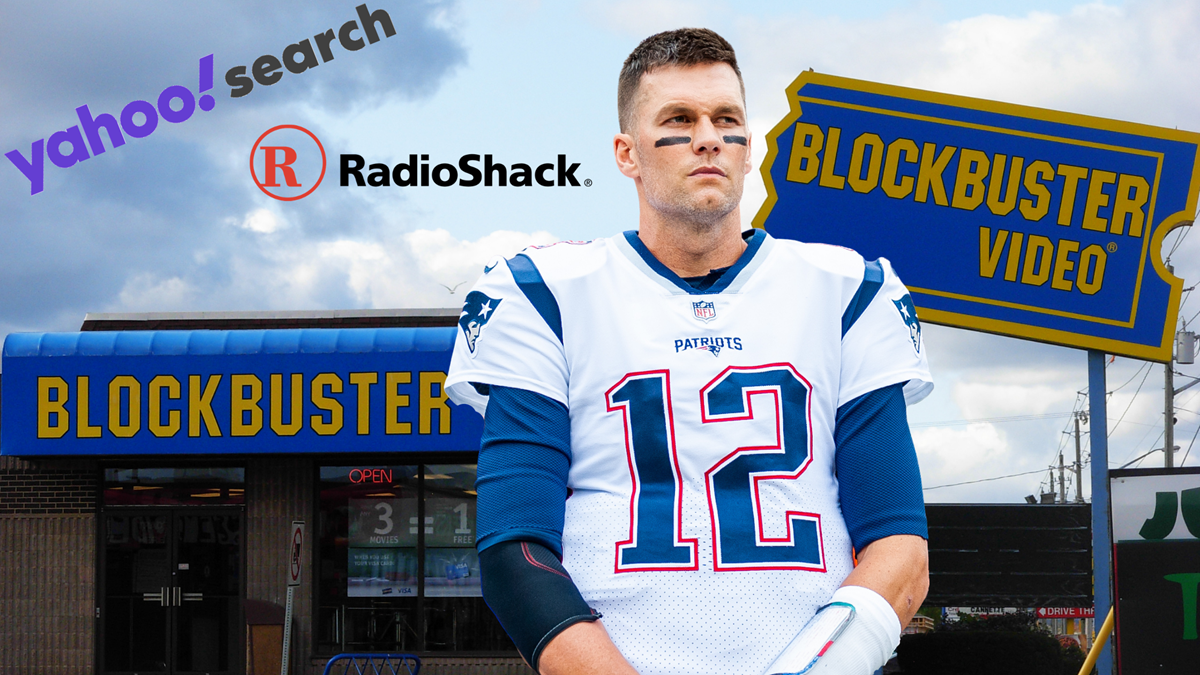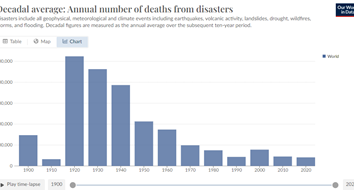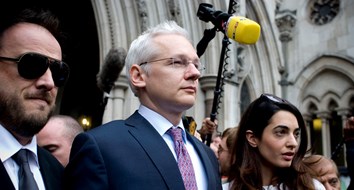Super Bowl 55 is now history. In some ways, it was a familiar scene. After 60 minutes of play, Tom Brady once again hoisted the Lombardi Trophy, leading the Tampa Bay Buccaneers to a 31-9 drubbing of the Kansas City Chiefs.
It was Brady’s seventh Super Bowl win and his fifth Super Bowl MVP award. Of course, #12 was wearing a different uniform this time. But that wasn’t the only thing that changed.
According to Twitter, Super Bowl commercials have also changed a lot. There was a lot of grumbling about that, but c'mon—companies are shelling out $5.5 million for just 30 seconds of air time. That’s more than double the $2.2 million companies were paying when Brady won his first Super Bowl in 2002. If you’re paying that much, you can say whatever you want, as far as I’m concerned.
Did the commercials suddenly get worse for this year's Super Bowl, or is this just the latest phase in an ongoing decline?
— Paul Graham (@paulg) February 8, 2021
Woke corporations equal crap #SuperBowl commercials.
— Jonathan T Gilliam (@JGilliam_SEAL) February 8, 2021
In any event, there was a bigger and better lesson on Super Bowl commercials. As Jon Erlichman, anchor of BNN Bloomberg's morning program “The Open,” observed, Tom Brady’s Super Bowl success has outlasted many titans of corporate America.
Consider some of the names that bought Super Bowl airtime during Brady’s first rodeo in January 2002: AOL, Blockbuster, Radio Shack, Circuit City, CompUSA, Sears, Yahoo, VoiceStream Wireless, and Gateway Computers.
The Titans of Yesterday
Notice a theme? That list features some companies we saw in Captain Marvel, the 2019 hit movie that nailed 90s nostalgia and reminded us how fast the world had changed. Like when Blockbuster Video stores were still a thing.
For those who may not recall, when Brady was winning his first Super Bowl, Blockbuster was approaching its peak. In 2004, it operated 9,094 stores and employed some 84,300 people. The company was pulling in $6 billion in revenue annually and looked invincible. Today, a single Blockbuster store remains open—in the world.
Remember RadioShack? Once upon a time, it seemed as if you could find one of their brick-and-mortar stores in every corner of the USA. Not anymore. In 2015, RadioShack filed for Chapter 11 bankruptcy, in large part because of those many store locations, which cannibalized revenues.
Sears, one of the historic giants of retail, managed to make it to 2018 before announcing its bankruptcy. Its stores continue to close so fast, it’s hard to tell how many remain in operation. (The best guess is about 60.)
As economist Mark Perry points out, companies on top have a very hard time staying on top.
In 2009, Circuit City announced it was going out of business after 60 years of serving customers. Hotjobs was acquired by Yahoo shortly after Brady beat the Rams in Super Bowl 36, but the company went defunct in 2011.
AOL and Yahoo both still exist, of course, but they were gobbled up by Verizon in 2015 ($4.4 billion) and 2017 ($4.5 billion), respectively—though their parent company indicated in a 2018 SEC filing that both of the communications giants are virtually worthless.
As for CompUSA, VoiceStream Wireless, and Gateway Computers, there’s a good chance you don’t even remember them. But not too long ago, all these companies were on top, buying millions of dollars of airtime in an effort to stay there.
Blockbuster, Netflix, and Schumpeterian Creative Destruction
Some might see the collapse of Blockbuster, Sears and company as a sign of something terribly wrong with our economic system. After all, Blockbuster alone paid rent at tens of thousands of properties and employed tens of thousands of workers. Sears was the largest American retailer (by far) for decades.
Watching the companies we once shopped at flounder and fail can be surprising, jarring even. But a closer look shows this cycle is not unusual and is actually the sign of a healthy market economy, not a dysfunctional one. What may seem like pure destruction actually clears the way for economic innovation and renewal. “Creative destruction” is how the economist Joseph Schumpeter (1880-1950) characterized business failure in a free market.
As economist Mark Perry points out, companies on top have a very hard time staying on top. Perry, a scholar at the American Enterprise institute and a professor of economics at the University of Michigan’s Flint campus, compared the 1955 Fortune 500 companies to the 2019 Fortune 500. He found that just 52 were still on the list six decades later.
Schumpeter understood that creative destruction is not a sign of expiration but of life.
“The fact that nearly nine of every 10 Fortune 500 companies in 1955 are gone, merged, reorganized, or contracted demonstrates that there’s been a lot of market disruption, churning, and Schumpeterian creative destruction over the last six decades,” Perry wrote. “It’s reasonable to assume that when the Fortune 500 list is released 60 years from now in 2079, almost all of today’s Fortune 500 companies will no longer exist as currently configured, having been replaced by new companies in new, emerging industries, and for that we should be extremely thankful.”
Perry is right. As he explains, the rise and fall of companies is a positive sign of a dynamic, vibrant, and innovative market economy driven by incentives to better serve consumers. The fact that turnover is increasing in speed because of instantaneous communication and a hyper-competitive global economy is a good thing, not something to be feared.
Take Blockbuster. I have nothing against Blockbuster. I rented lots of movies from them. They had a great selection and their prices were reasonable (usually $1 or $2). But Blockbuster also had problems, not the least of which was a business model built on slapping gobs of late fees on customers. (In fact, $800 million worth annually.)
Customers hate late fees. A big fat late fee was what inspired entrepreneur Reed Hastings to team up with coworker Marc Randolph to launch Netflix, the company that would eventually dethrone Blockbuster.
"I had a big late fee for Apollo 13. It was six weeks late and I owed the video store $40. I had misplaced the cassette. It was all my fault,” Hastings said.
At $40, Hastings could have bought several copies of Apollo 13. Instead, he had little choice but to return his single video and pay the fee. During a workout later, he realized gyms have a better business model.
The simple truth is that the vast majority of companies will never get on top, and the few that do ascend to those heights are unlikely to stay there long.
“You could pay $30 or $40 a month and work out as little or as much as you wanted,” he noted.
Sensing an opportunity, Hastings created Netflix, a subscription-based rental service that allowed users to go online and select the movies they wanted to watch, which would then be mailed to them. Customers could keep movies as long as they wanted, getting new movies once the others were returned. No late fees. Watch as many movies in a month (or as few) as you want, so long as you can get them mailed quickly.
Sounds simple, right? Well, it wasn’t. Netflix ran into all kinds of problems, as Sean Malone points out in this wonderful Out of Frame episode. That’s why Hastings tried to sell Netflix to Blockbuster for $50 million, only to be rebuffed. (Big mistake, Blockbuster. Big mistake.)
But in the end, Netflix won because it offered customers a superior product. Today we stream content at the click of a button and have more options than we can possibly watch. This did not happen by accident.
And when you think about it: isn’t it for the best? However wistful we feel when we see a Blockbuster store in a retro movie and reminisce about movie night stops at Blockbuster to pick up some microwave popcorn and the latest Keanu flick, most of us wouldn’t bring back the old days (no streaming, lots of late fees, etc), even if we could.
Blockbuster’s fall and Netflix’s rise is an example of the “Schumpeterian creative destruction” Perry alluded to. The destruction of yesterday’s Blockbuster meant the creation of today’s Netflix, Redbox, Disney+, etc.
As long as there is competition in a market economy, some will fall as others rise.
Schumpeter understood that creative destruction is not a sign of expiration but of life. It’s not the sign of a dying economy but a vibrant one that is moving ever forward.
“The essential point to grasp is that in dealing with capitalism we are dealing with an evolutionary process,” Schumpeter wrote in the seminal work Capitalism, Socialism, and Democracy. “Capitalism, then, is by its nature a form or method of economic change and not only never is but never can be stationary.”
The simple truth is that the vast majority of companies will never get on top, and the few that do ascend to those heights are unlikely to stay there very long. Just like NFL quarterbacks.
Is it a little sad when a star like Tom Brady finally retires or stores like Sears and Blockbuster go under? Sure. But that doesn’t mean it’s not perfectly natural, healthy, and good.
You can bet your last dollar that Brady will eventually be out of an NFL job, replaced by the next crop of young superstar quarterbacks. Just like you can bet that many of those companies who coughed up $5.5 million for 30-seconds airtime Sunday night will soon find themselves in the same situation as RadioShack.
What’s important to remember is that’s okay.
As long as there is competition in a market economy, some will fall as others rise. Everything has a shelf life. Even Tom Brady.





